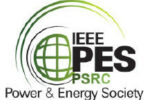X-to-Grid – coordinating vehicle charging, customer energy management systems and grid operations
by Tom Berry, Schneider-Electric

IEC TC 57 WG 17 is in charge of power system intelligent electronic device communication and associated data models for microgrids, distributed energy resources and distribution automation.
Several organisations around the world have recognized the potential for improved coordination between grid operators and grid users. Two major areas are the rapid growth of electrical vehicle charging, and to allow buildings energy management systems to better contribute to energy efficiency.
It is a fast-moving field with several initiatives coming from industry groups. Each of these have their specific application areas and sometimes regional aspects.
At the same time newer cloudbased technologies and concepts like the Internet of Things (IoT) are becoming more widespread.
Within the IEC, the System Committee for Smart Energy has been taking a holistic view and has been reviewing the development roadmap priorities for the technical committees. One of the topics is how grid operators interact with the Energy Management Systems for premises that have their own energy resources, controllable loads and energy storage (both battery or thermal).
A related topic is the standardisation of interfaces for DER Energy Management Systems (DERMS) that allow entities to manage their DERs. Use cases have been proposed where the DERMS acts as a virtual power plant, or as an aggregrator for demand side management, but there are undoubtably other interesting usecases.
A third topic looks at the specific issues related to management of distributed energy storage systems based on electrically chargeable vehicles. This is often referred to as “vehicle-to-grid.” Many of the existing standards or industry protocols in this area come from the automative industry with more emphasis on the vehicle than on the grid operational needs.
From the grid perspective, the requirements for power limits, voltage control etc are similar for static installations vs EV charging installations. Compared to static battery storage, EV charging infrastructures add more uncertainty for forecasting and have more complex contractual/financial aspects.
These topics will require new concepts and information models to be adopted within various communications standards. These include the concepts of:
- Power Constraints: what an energy resource is physically capable of
- Power Forecasts: what an energy resource or consumer is expected to do over a time frame
- Power Envelope: what an energy resource or consumer is allowed to do over some time frame
These concepts can be applied to DER generation to curtail production due to network constraints. Similar concepts are used in demand response where under normal conditions the demand is postponed not cancelled; or help with more fine-grained load shedding in response to abnormal or emergency conditions.
One of the discussion points will be related to real time access to consumption data, in other words smart meters. One school of thought is that smart meters should be extended to not only provide data for revenue purposes but also provide near real time data to building control and management systems.
This promises hardware cost savings for small residential premises but may be difficult to manage especially for security aspects. Larger premises will probably have dedicated measurement devices as well as smart meters at the grid connection point.
Biography:

Tom Berry studied Electrical Engineering at Bath University, UK. For the last 25 years he has worked for Schneider Electric in the UK and France.
Tom has worked on control center projects integrating SCADA systems within dispatch training simulators, transmission and distribution network management systems. He now works “closer to the edge” as a software architect for feeder automation RTUs. He is a member of several IEC TC57 WGs and the editor of IEC TS 62361-102 technical report on CIM-61850 harmonization.








